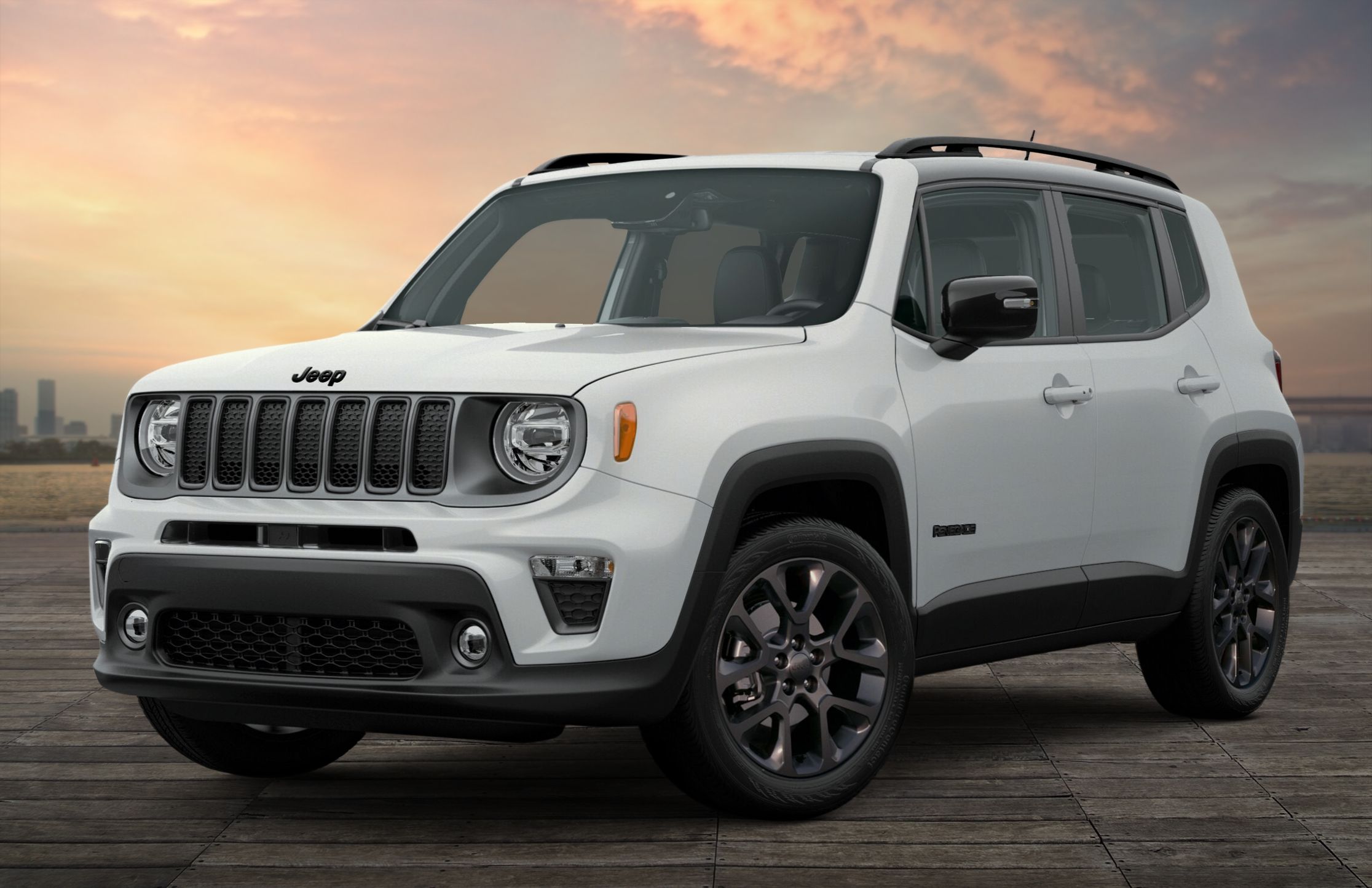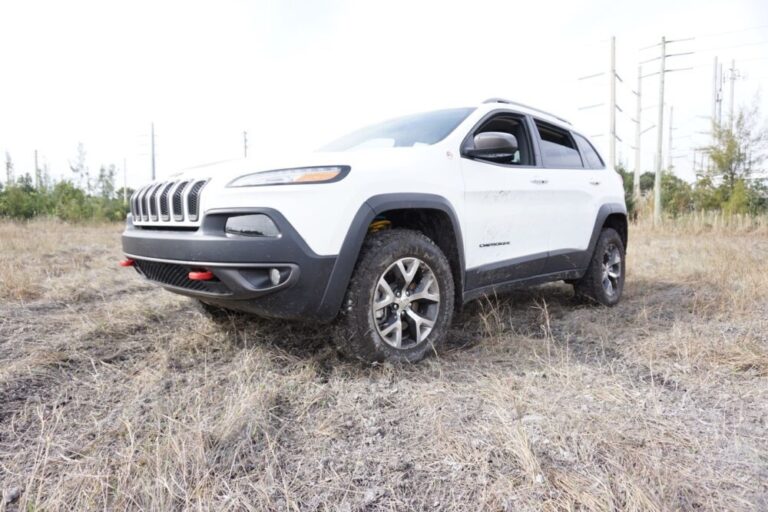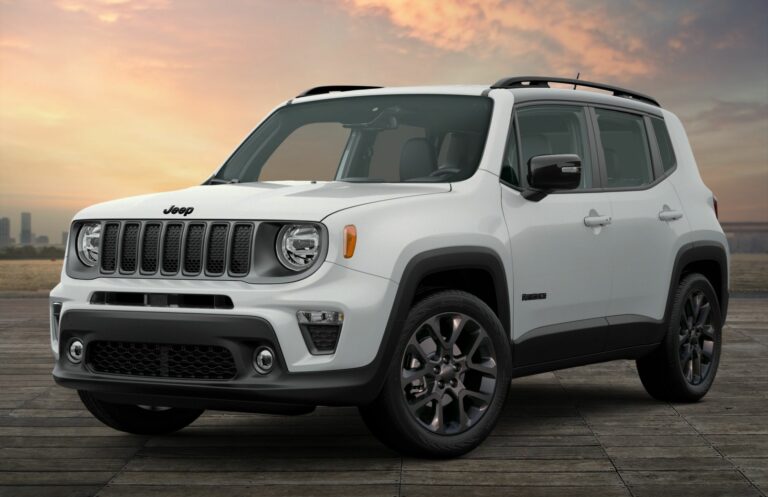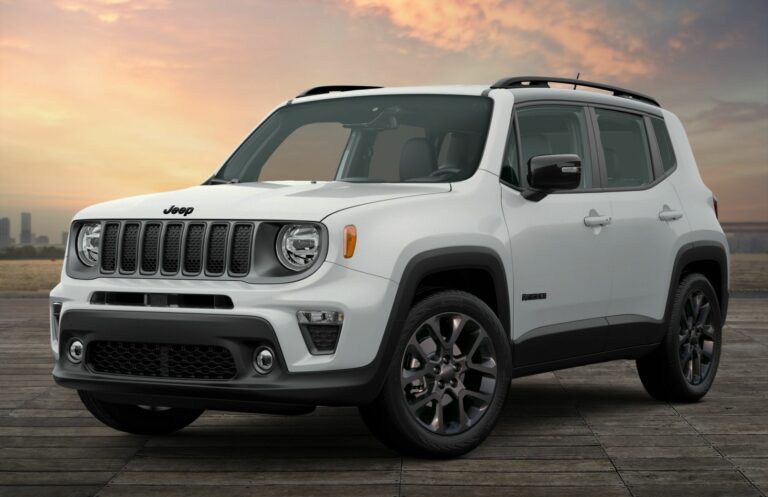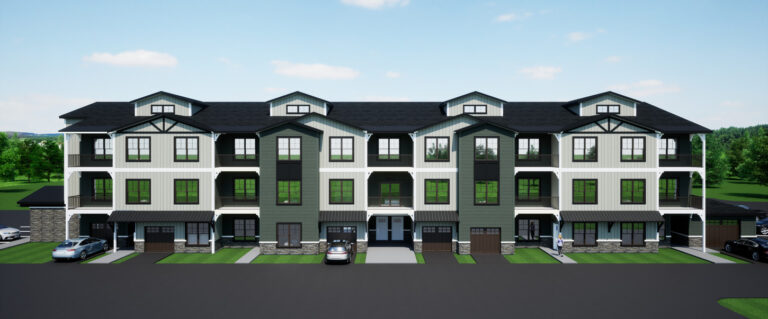Jeep Dana 60 Axles For Sale: The Ultimate Guide to Off-Road Strength
Jeep Dana 60 Axles For Sale: The Ultimate Guide to Off-Road Strength jeeps.truckstrend.com
The world of off-roading and rock crawling demands components that can withstand extreme abuse, relentless torque, and the sheer punishment of challenging terrain. For Jeep enthusiasts pushing the limits of their vehicles, one name consistently rises above the rest as the gold standard for axle strength: the Dana 60. When considering serious upgrades for a Jeep, the quest for "Jeep Dana 60 Axles For Sale" often marks a turning point from casual trail riding to hardcore capability.
This comprehensive guide will delve into everything you need to know about Dana 60 axles for Jeeps, from why they are indispensable to where to find them, what to look for, and what to expect during the installation process. Whether you’re building a dedicated crawler, a heavy-duty overlander, or simply want unparalleled peace of mind on the trail, the Dana 60 is a cornerstone of robust vehicle construction.
Jeep Dana 60 Axles For Sale: The Ultimate Guide to Off-Road Strength
Why Choose a Dana 60 for Your Jeep? Unmatched Strength and Durability
The Dana 60 is not just an axle; it’s a legend. Manufactured by Dana Incorporated, these heavy-duty axles have earned their reputation through decades of reliable service in everything from ¾-ton and 1-ton trucks to military vehicles and, of course, highly modified off-road rigs. For a Jeep, upgrading to Dana 60 axles means unlocking a new level of performance and resilience.
Here’s why it’s the preferred choice for serious Jeep builds:
- Unmatched Strength and Durability: The core appeal of the Dana 60 lies in its robust construction. It features a larger ring and pinion gear (9.75 inches for the Dana 60, compared to 8.25-8.8 inches for Dana 44s and even smaller for Dana 30s), thicker axle tubes, and significantly stronger axle shafts (typically 30, 32, or 35 splines, with aftermarket options going even higher). This translates to a massive increase in torque capacity and resistance to breakage, even when running massive tires.
- Increased Payload Capacity: For Jeeps loaded with heavy armor, winches, recovery gear, roof racks, and camping equipment, a stock axle can quickly become overloaded. Dana 60s are designed for higher Gross Axle Weight Ratings (GAWRs), allowing your Jeep to carry more weight without stressing the components.
- Larger Tire Compatibility: While a well-built Dana 44 can handle up to 37-inch tires, a Dana 60 is designed to confidently run 37s, 40s, 42s, and even larger tires without constant worry of snapping axle shafts or grenading ring and pinions. The larger tire diameter puts immense stress on the drivetrain, and the Dana 60 is built to absorb it.
- Vast Aftermarket Support: The popularity of the Dana 60 means there’s an enormous aftermarket industry dedicated to it. From lockers (ARB, Eaton, Detroit, OX), re-gear kits, chromoly axle shafts, heavy-duty covers, and high-steer arms, virtually any component you could desire is readily available. This makes customization and repair straightforward.
- Peace of Mind: On the trail, especially far from civilization, a broken axle can turn an epic adventure into a nightmare. Upgrading to Dana 60s significantly reduces the risk of axle failure, allowing you to tackle more challenging obstacles with confidence and enjoy your trip without constant mechanical anxiety.

Understanding Different Dana 60 Varieties for Jeeps
Not all Dana 60s are created equal. Understanding the different types and their origins is crucial when searching for "Jeep Dana 60 Axles For Sale."
Kingpin vs. Ball Joint
This distinction primarily applies to front Dana 60 axles:
- Kingpin: Older Dana 60s (typically pre-1990s) used a kingpin design, featuring large, robust pins that articulate the steering knuckles. These are generally considered stronger and more durable for severe off-road use, as they can handle heavier loads and resist deflection better. Maintenance involves greasing and occasional bushing/bearing replacement.
- Ball Joint: Newer Dana 60s (common in 1990s and later trucks) utilize ball joints, similar to passenger car suspensions. While easier to manufacture and often providing a smoother steering feel, they are generally perceived as less robust than kingpins for extreme rock crawling, as they can wear out faster under heavy loads and large tires.
For the ultimate strength build, many off-roaders seek out kingpin Dana 60s, though modern aftermarket ball joints are significantly improved.
Full Float vs. Semi-Float
This distinction primarily applies to rear Dana 60 axles:
- Semi-Float: In a semi-float axle, the weight of the vehicle is supported by the axle shaft itself, which is splined at the differential end and bolted to the wheel hub at the other. If an axle shaft breaks, the wheel can potentially detach from the vehicle. Most stock Jeep axles (Dana 30, 35, 44) are semi-float.
- Full Float: In a full-float axle, the weight of the vehicle is supported by two bearings on the spindle, with the axle shaft simply transmitting torque. The wheel hub is bolted directly to the spindle, not the axle shaft. If a full-float axle shaft breaks, the wheel remains attached to the vehicle, allowing for easier trail repairs or limping off the trail. Full-float axles are inherently stronger and safer for heavy-duty applications. Most factory Dana 60 rears are full-float.
For a serious build, a full-float Dana 60 rear is highly recommended.
Factory Applications (Donor Vehicles)
Many Dana 60 axles available for sale come from donor vehicles. Knowing where to look can save you significant money:
- Front Dana 60s:
- Ford: F-250/F-350 (1978-1997), Super Duty (1999-present – though these are Super Duty Dana 60s which have unique characteristics like larger tubes and unit bearings). Kingpin versions are highly sought after (1978-1991).
- Dodge: W250/W350 (1975-1993), Ram 2500/3500 (1994-2002).
- Chevy/GMC: K30/K3500 (1977-1991).
- Rear Dana 60s:
- Ford: F-250/F-350, E-250/E-350 vans.
- Dodge: W250/W350, Ram 2500/3500.
- Chevy/GMC: K20/K30/K3500, C20/C30/C3500, G20/G30 vans.
- Jeep: Older J-trucks (Gladiator, Honcho) and military M715 trucks sometimes came with Dana 60 rears, though these are rare finds.
When sourcing from a donor, pay close attention to the WMS (Wheel Mounting Surface) to WMS width, as truck axles are significantly wider than stock Jeep axles and will require careful planning for tire coverage and overall vehicle width.
Aftermarket/Crate Dana 60s
For those seeking a turn-key solution or custom specifications, numerous companies offer brand-new, purpose-built Dana 60 axles. Brands like Dynatrac, Currie Enterprises, G2 Axle & Gear, and Spidertrax are renowned for their high-quality, application-specific Dana 60s. These can be ordered to precise widths, with desired gear ratios, lockers, upgraded axle shafts, and specific mounting brackets already welded on. While significantly more expensive, they offer unparalleled strength, precision, and a warranty.
Key Considerations When Buying a Used Dana 60 for Your Jeep
Buying used can save money, but it requires careful inspection and an understanding of what you’re getting into.
- Condition Assessment:
- Housing Integrity: Look for bends, cracks, or severe rust. A bent housing is a deal-breaker.
- Knuckles/Spindles: Check for damage, wear, or cracks, especially around ball joint or kingpin mounts.
- Axle Shafts: Inspect splines for twisting or wear. Check for straightness.
- Gears: Pull the differential cover (if possible) and inspect the ring and pinion. Look for chipped teeth, excessive wear patterns, or signs of pitting. Check backlash.
- Bearings and Seals: Look for oil leaks around the pinion seal, inner axle seals, and hub seals. Assume they’ll need replacement.
- Brakes: Truck brakes are often robust but typically need new pads, rotors, and calipers.
- Width (WMS to WMS): This is paramount for Jeep fitment. Most donor truck axles are 67-72 inches wide, significantly wider than a typical Jeep JK (65 inches) or TJ (60.5 inches). You’ll need to decide if you want to run extremely wide tires, use wheel spacers/adapters, or have the axle professionally shortened (which adds significant cost).
- Gear Ratio: Ensure the gear ratio matches if you’re buying a pair, or plan to re-gear both axles to your desired ratio.
- Locker/Limited Slip: Some used axles might come with a locker or limited-slip differential. Identify what it is (open, limited slip, automatic locker, selectable locker) and factor that into the value.
- Steering & Suspension Mounts: These will almost certainly need to be cut off and new mounts fabricated and welded to match your Jeep’s suspension (4-link, 3-link, leaf spring).
- Pinion Yoke Type: Confirm the yoke type (e.g., 1350, 1410 series) to ensure compatibility with your driveshaft or plan for an adapter.
- Bolt Pattern: Most truck Dana 60s have an 8-lug bolt pattern (8 on 6.5 inches or 8 on 170mm for newer Ford Super Duties). This means you’ll need new wheels to match.
Where to Find Jeep Dana 60 Axles For Sale
The hunt for Dana 60s can be an adventure in itself:
- Online Marketplaces:
- Craigslist and Facebook Marketplace: Excellent for local finds from individuals. Be ready to travel.
- eBay: Wider selection but shipping costs can be prohibitive for heavy items like axles.
- Dedicated Off-Road Forums: Websites like Pirate4x4.com, JeepForum.com, and local 4×4 club forums often have classified sections where enthusiasts sell parts.
- Salvage Yards/Junkyards: Ideal for sourcing donor vehicles or just the axles. You’ll likely need to pull them yourself or pay for extraction. Prices can be very good, but condition varies wildly.
- Specialized Off-Road Shops: Many custom fabrication shops or axle specialists often have used Dana 60 cores for sale, or they can build you a custom one.
- Aftermarket Manufacturers: For brand new, purpose-built Dana 60s, go directly to the websites of companies like Dynatrac, Currie, G2, etc.
- Word of Mouth/Local Clubs: Attend local Jeep meets or 4×4 events. Networking can uncover hidden gems.
The Installation Process: What to Expect
Installing Dana 60 axles into a Jeep is a significant undertaking and rarely a "bolt-in" affair, especially when using donor truck axles.
- Fabrication Required: Be prepared for extensive fabrication. This includes cutting off old brackets, designing and welding on new link mounts, coil spring/shock mounts, track bar mounts, and sway bar tabs specific to your Jeep’s suspension geometry.
- Drive Shaft Modifications: The larger pinion yokes and potentially different axle lengths will necessitate new or modified driveshafts.
- Brake System Integration: You’ll need to adapt the truck’s brake calipers and rotors to your Jeep’s master cylinder and brake lines. This might require a new master cylinder or proportioning valve for proper brake bias.
- Steering Upgrades: The heavier Dana 60 and larger tires will put immense strain on your stock steering. Hydro assist steering is highly recommended or even necessary for a functional and safe steering system. You’ll also need a heavy-duty steering linkage (tie rod, drag link).
- Professional Installation vs. DIY: Unless you have advanced welding, fabrication, and automotive mechanical skills, along with the necessary tools (welder, grinder, hoist, etc.), professional installation is highly recommended. Improperly welded brackets or incorrect suspension geometry can lead to dangerous driving conditions.
Practical Advice and Actionable Insights
- Budget Beyond the Axle: The cost of the bare axle is just the beginning. Factor in: re-gearing, lockers, axle shafts, brake components, driveshafts, steering upgrades, new wheels (8-lug), and extensive fabrication labor (yours or a shop’s). A complete Dana 60 swap can easily run into the five-figure range.
- Measure Twice, Cut Once: This adage is critical for axle width, link mounts, and every other fabrication step.
- Inspect Thoroughly: Never buy a used axle sight unseen. Bring a flashlight, a magnet (to check for Bondo over cracks), and a discerning eye. If possible, bring someone knowledgeable.
- Consider a Rolling Chassis: Sometimes, buying a complete donor truck or a rolling chassis with Dana 60s can be more cost-effective than buying axles individually, as you get the brakes, wheels, and sometimes even suspension components that can be adapted.
- Plan Your Build: Before you buy, have a clear vision for your Jeep’s ultimate use. This will guide your choices on axle width, gear ratio, and locker selection.
Estimated Price Guide for Jeep Dana 60 Axles For Sale
Prices for Dana 60 axles vary wildly based on condition, features, and source. The table below provides a general range; specific prices will depend heavily on market demand, location, and the seller.
| Axle Type (Front/Rear) | Condition | Key Features (Common Config.) | Estimated Price Range (USD) | Notes |
|---|---|---|---|---|
| Used Front Dana 60 | Donor/Core | Bare housing, stock shafts, open diff, no brakes | $800 – $2,500 | Requires full rebuild, new gears, locker, potentially new shafts, brake components. Width often needs addressing. |
| Used Front Dana 60 | Rebuilt/Equipped | Re-geared, locker (e.g., Detroit), chromoly shafts, good brakes | $3,500 – $6,000 | Ready for installation, but still requires fabrication for mounting. |
| New Crate Front Dana 60 | Aftermarket | Custom width, choice of gears, locker, 35-spline shafts, diff cover, specific mounting brackets | $7,000 – $12,000+ | Bolt-in (with minor mods often), warranty, specific to Jeep model, highest strength. |
| Used Rear Dana 60 (Full Float) | Donor/Core | Bare housing, stock shafts, open diff, no brakes | $700 – $2,000 | Similar to front, requires full rebuild. Full-float is key for strength and safety. |
| Used Rear Dana 60 (Full Float) | Rebuilt/Equipped | Re-geared, locker (e.g., ARB), chromoly shafts, good brakes | $3,000 – $5,500 | Ready for installation, still needs mounting brackets. |
| New Crate Rear Dana 60 (Full Float) | Aftermarket | Custom width, choice of gears, locker, 35-spline shafts, diff cover, specific mounting brackets | $6,500 – $11,000+ | Bolt-in (often), warranty, specific to Jeep model, ultimate strength. |
| Pair (Front & Rear) | Used Donor | Unrebuilt, various conditions, truck widths | $1,500 – $4,000 | Best value for cores, but high cost of rebuilding and fabrication. |
| Pair (Front & Rear) | New Crate | Matched set, custom configured, ready for install | $13,000 – $25,000+ | Top-tier solution, highest upfront cost, lowest long-term hassle. |
Note: These prices are estimates only and do not include shipping, installation labor, or other necessary components like driveshafts, steering upgrades, or new wheels.
Frequently Asked Questions (FAQ) about Jeep Dana 60 Axles
Q: Can I run 40-inch tires on a Dana 60?
A: Yes, absolutely. The Dana 60 is generally considered the minimum axle required for reliably running 40-inch and larger tires in demanding off-road conditions, especially with aftermarket chromoly axle shafts and a good locker.
Q: Do Dana 60s bolt right into my Jeep JK/JL?
A: No, not typically. Used truck Dana 60s are significantly wider and have different mounting points. They require extensive fabrication to install. Aftermarket "crate" Dana 60s for JKs/JLs are designed as near bolt-in replacements, but they come at a much higher cost.
Q: What’s the difference between a kingpin and ball joint Dana 60?
A: Kingpin Dana 60s use large, durable pins for steering articulation, typically found in older, heavy-duty applications. They are generally considered stronger for extreme use. Ball joint Dana 60s use ball joints, similar to modern passenger vehicles, and are found in newer trucks. While easier to maintain, they are perceived as less robust for severe off-road abuse compared to kingpins.
Q: Should I buy a used or new Dana 60?
A: This depends on your budget, mechanical skills, and desired timeline.
- Used: Cheaper upfront, but requires significant work (rebuild, fabrication, parts sourcing). Best for those with welding and fabrication skills.
- New/Crate: Much more expensive, but comes ready to install with a warranty, specific configurations, and often stronger components. Best for those who want a turn-key solution and maximum reliability.
Q: What other parts will I need when installing a Dana 60?
A: Beyond the axle itself, expect to need: new driveshafts, upgraded steering components (tie rod, drag link, possibly hydro assist), new wheels (8-lug), a re-gear if necessary, a locker, new brake lines and potentially a master cylinder, and all new suspension mounts.
Q: How much does it cost to re-gear a Dana 60?
A: Re-gearing a single Dana 60 axle can cost anywhere from $700 to $1,500 or more for parts and labor, depending on the shop and gear ratio. This cost is per axle, so a front and rear re-gear will be double.
Conclusion: The Ultimate Upgrade for the Dedicated Off-Roader
The quest for "Jeep Dana 60 Axles For Sale" is more than just a search for parts; it’s a declaration of intent. It signifies a commitment to building a Jeep that can tackle the most formidable obstacles, shrug off trail abuse, and deliver unparalleled confidence in the backcountry. While the investment in time, money, and fabrication is substantial, the benefits of Dana 60 axles—their legendary strength, durability, and adaptability—make them the ultimate upgrade for any serious Jeep enthusiast.
Whether you opt for a budget-friendly used donor axle and embark on a custom fabrication journey, or invest in a meticulously crafted new crate axle, the Dana 60 will transform your Jeep into an unstoppable force, ready for whatever the trail throws its way.
